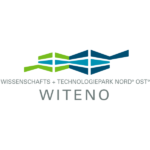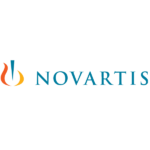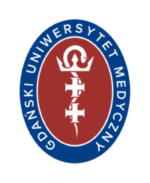Next steps towards realizing the bioeconomy in the Baltic Sea Region
A number of networks have been set up and projects launched in the two years since the European Commission appointed the Nordic Council of Ministers as Horizontal Action Leader for the EU Strategy for the Baltic Sea Region. A new three-year plan for the work was presented and discussed at a conference in Warsaw 4–5 March.

“Bioeconomy is the next economic wave,” if you ask Sixten Sunaback from the Finnish Ministry of Economy, citing the newFinnish Bioeconomy Strategy. “It is all about change and finding new ways.”
“But to create a new biobased economy and move away from our dependency of fossil fuels, you need to break down a lot of silos and make a lot of new connections across sectors and industries,” he stated at a conference in Warsaw on 4 March that discussed the next steps in the process towards realising the bioeconomy in the Baltic Sea Region.
The workshop was co-funded by the EU Commission and the Nordic Council of Ministers (NCM) in its role as Horizontal Action Leader for Bioeconomy in the EU Strategy for the Baltic Sea Region (EUSBSR).
Horizontal action
As part of its role as Horizontal Action Leader, the NCM has initiated and facilitated a number of new networks and actions through a series of workshops. They range from science networks looking at things like the phosphorus cycle in the region to grass roots movements aimed at raising capital for local development projects.
“The EU Strategy for the Baltic Sea Region is a unique platform to promote the bioeconomy in our region and the Nordic Council of Ministers has proved a very resourceful and well connected actor in terms of pushing this agenda,” the Head of Northern Europe Unit in the Polish Ministry of Foreign Affairs, Joanna Wojtkowska, said in her opening speech to the conference
Over the last two years, the NCM has tried to do exactly what Sixten Sunaback and many of the other prime movers are asking for: engage stakeholders across sectors and forge new connections to produce growth and welfare in a sustainable way.
Bottlenecks and Networks
“Now, it is time to stand back and consider the next steps, so a strategy for the next three years is under development with input from the participants at the workshop in Warsaw,” Senior Advisor Geir Oddsson of the Nordic Council of Ministers explains.
“We need to develop the existing partnerships further and add to the efforts already set in motion over the last two years. But we also need to address a number of bottlenecks impeding the bioeconomy in the region,” Oddsson told the Warsaw conference.
The main challenges as he sees them are to ensure links between overall strategies like the EUSBSR and what is actually taking place in the field, to strengthen private-sector engagement, and to make the most of the research and innovation facilities already in place.
Bioeconomy and circular economy
A key prerequisite for achieving this is linking the bioeconomy to overall efforts to strengthen the circular economy.
The EU Commission recently withdrew its white paper on circular economy, but according to Commissioner Timmermans only to propose a more ambitious plan in 2015, including all aspects of this new approach to production and resource management.
But what are “all aspects” of the circular economy and how is the circular economy linked to the bioeconomy, participants at the Warsaw conference asked?
According to David Goehring, Physical Environment Head at ChoraConnection, a new Danish think tank with a vision of creating a resilient and sustainable society, it is all about value chains.
“We need to look for new resource flows and new interconnections in a more mobile and fluid economy. We need to upcycle instead of downcycling. And we need to structure our societies in a much more flexible way,” he said.
“This may sound very high tech, but in fact it is simply going back to the old family farm, taking charge of how you consume and waste much less through new innovative business models,” Gohring underlined.
Creating involvement
One of the key points in The Finnish Bioeconomy Strategy is the need not just to innovate, but also to involve.
“One of our main priorities is to involve the public in the change that we try to achieve. You need to enter into a dialogue and make people understand the importance of the new bioeconomy in their daily lives,” Sixten Sunaback Strategic Director, Forest Sector and Bioeconomy, Ministry of Employment and the Economy of Finland, stated in his presentation.
“ This also means including bioeconomy issues at all levels of our education system as well as ensuring a sustainable bottom line to all new initiatives. Without sustainability, there is no bioeconomy,” Sunaback firmly declared.
One of the initiatives started with seed money from the NCM Baltic Sea region bioeconomy project, Realizing the Bioeconomy for the Baltic Sea Region, deals with just that, engaging stakeholders.
“We need to move from a triple helix focus, targeting academia, businesses and government to a quadruple helix involving civil society. To realise the bioeconomy, we need to change society as such,” according to project manager Professor Margareta Dahlström from Karlstad University.
Next steps
The work of the NCM as Horizontal Action Leader in the EUSBSR has so far included a launch in Stockholm in December 2013, two conferences in Tallinn and Berlin engaging Baltic and German participants, and the Warsaw conference to highlight the opportunities in one of the countries with the biggest bioeconomy potential in Europe, namely Poland.
The new action plan towards a BSR Bioeconomy proposed by the Nordic Council of Ministers was well received at the Warsaw conference.
There was broad agreement about the need for keeping up the dialogue through the type of networking activities initiated and facilitated by the Nordic Council of Ministers. Seed money from the NCM has so far led to eight promising projects and more are underway.
But the need for shared platforms was also underlined, well in line with some of the proposals for the NCM. The action plan proposes setting up both a policy forum and a business forum, as well as strengthening the communication and networking activities overall.
For information on the ongoing projects as well as the new action plan, see www.norden.org/bioeconomy where the follow up to the work on realising the bioeconomy in the Baltic Sea region will also be presented.
ScanBalt News
17 March 2025
LifeScience4EU Conference 2025 | 15-16 May | Krakow











